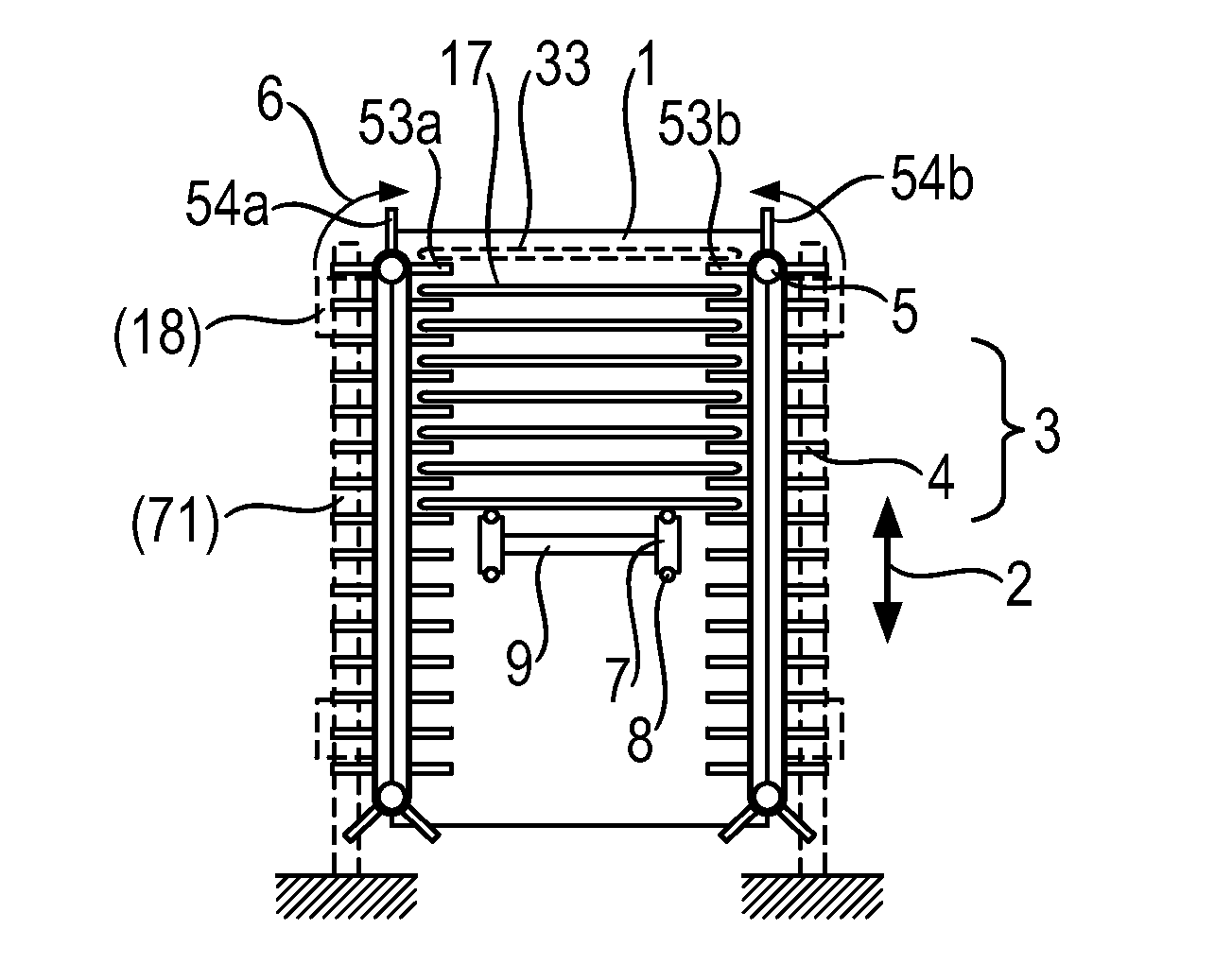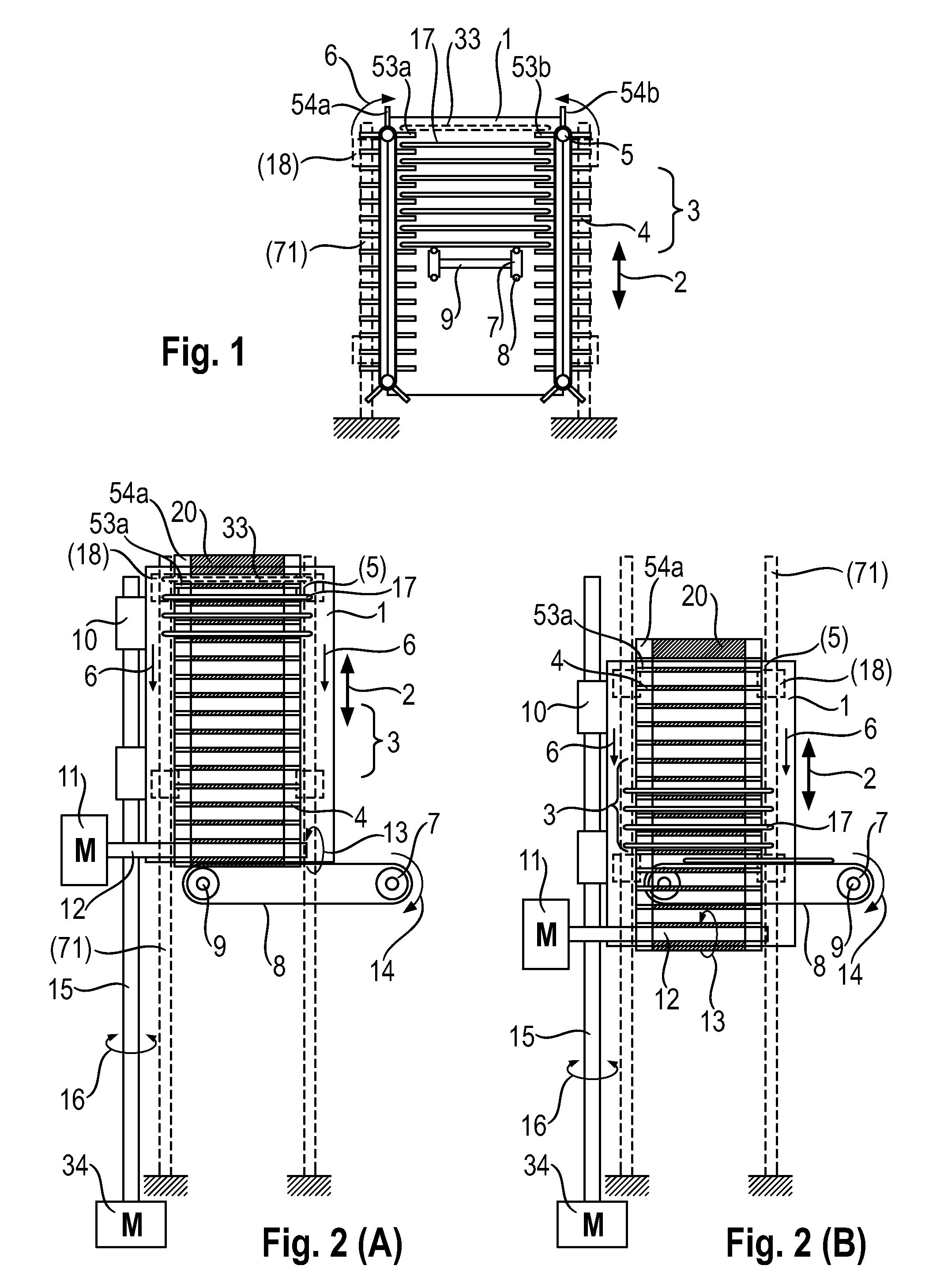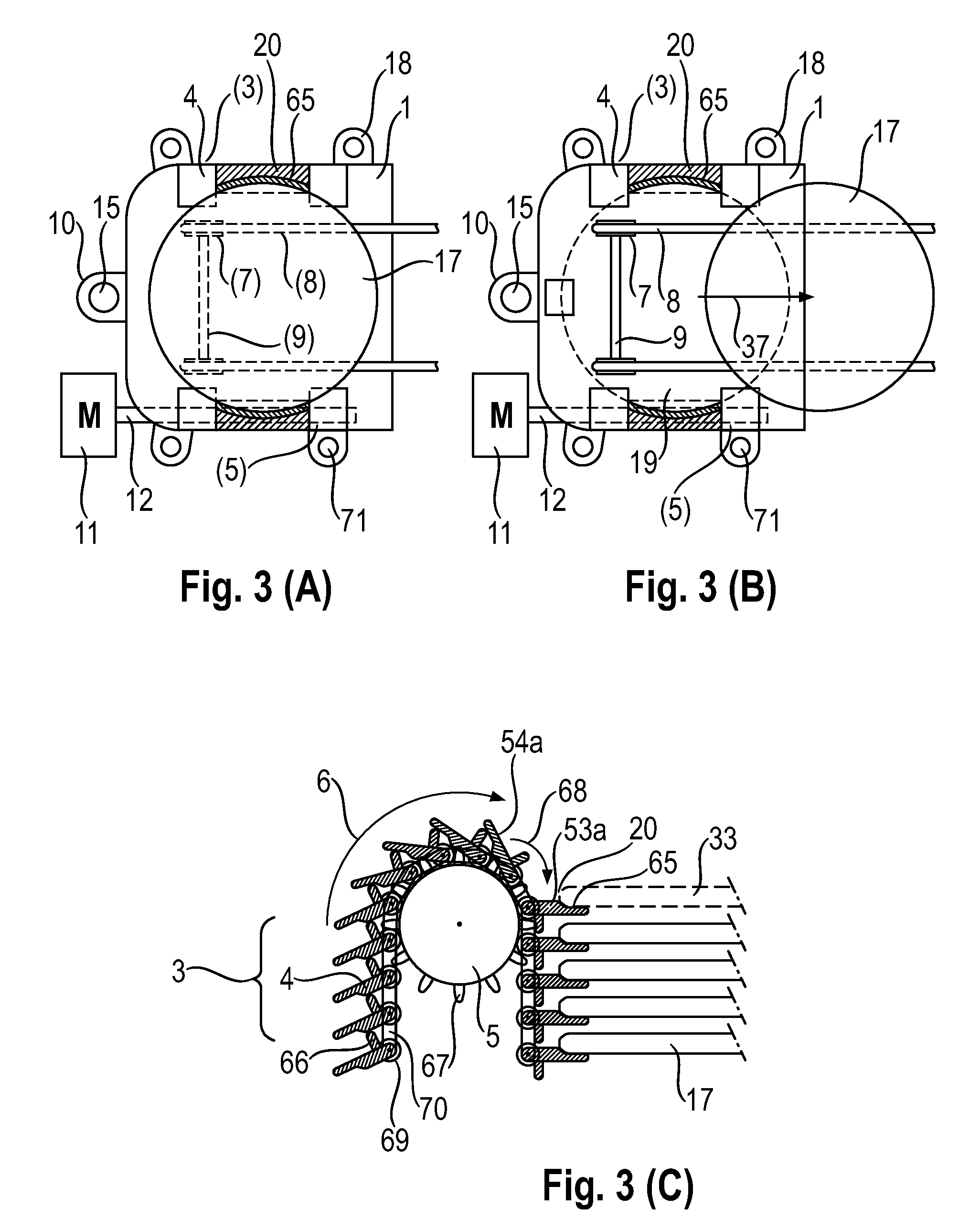Device and method for buffer-storing a multiplicity of wafer-type workpieces
a technology of multiplicity and workpiece, applied in the direction of loading/unloading, thin material handling, article separation, etc., can solve the problems of increasing the cost of operating personnel, not being able to use batch cleaning methods, semiconductor wafers,
- Summary
- Abstract
- Description
- Claims
- Application Information
AI Technical Summary
Benefits of technology
Problems solved by technology
Method used
Image
Examples
example
[0105]A buffer-storing, cleaning and tray introducing device embodied in accordance with FIG. 6 was operated for cleaning semiconductor wafers from preceding processing by the PPG method. The pure grinding time was approximately 4 minutes during the PPG processing. For loading a PPG batch of 15 semiconductor wafers having a diameter of 300 mm, the installation operator needed approximately 90 seconds; and approximately 120 seconds for unloading. Including ancillary times of the installation (pivoting, lifting and lowering of the upper working disk at the beginning and end of the process; positioning the carriers with the semiconductor wafers after the end of the pass, such that the carrier loaded first was the first to pass into the unloading position after the end of the pass, and removing semiconductor wafers possibly adhering to the upper working disk after the end of the pass), the cycle time was approximately 9.5 minutes. The buffer store was operated with the first method acco...
PUM
 Login to View More
Login to View More Abstract
Description
Claims
Application Information
 Login to View More
Login to View More - R&D
- Intellectual Property
- Life Sciences
- Materials
- Tech Scout
- Unparalleled Data Quality
- Higher Quality Content
- 60% Fewer Hallucinations
Browse by: Latest US Patents, China's latest patents, Technical Efficacy Thesaurus, Application Domain, Technology Topic, Popular Technical Reports.
© 2025 PatSnap. All rights reserved.Legal|Privacy policy|Modern Slavery Act Transparency Statement|Sitemap|About US| Contact US: help@patsnap.com



